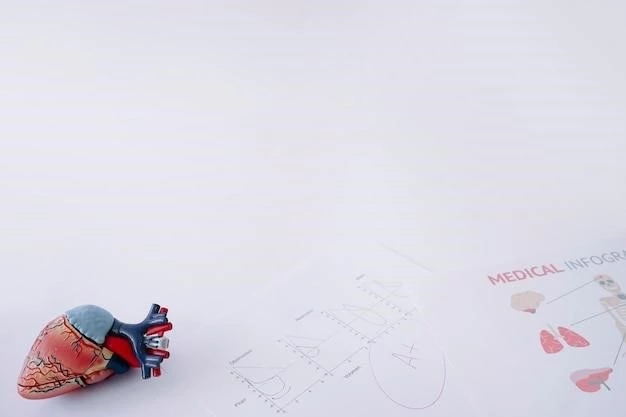Congenital heart disease refers to structural heart defects present at birth. It can range from mild to severe, impacting heart function. Early detection through screening is crucial for timely intervention and treatment to improve outcomes.
Early Detection of Congenital Heart Disease
Early detection of congenital heart disease is crucial in identifying potential abnormalities in the heart structure of infants. Screening methods, such as fetal echocardiography and pulse oximetry, play a significant role in diagnosing congenital heart defects before birth or in the newborn period. Fetal echocardiography, a specialized ultrasound of the fetus’s heart, can detect structural anomalies, while pulse oximetry measures oxygen levels in newborns to identify potential heart issues.
Additionally, healthcare providers conduct physical exams and auscultation of the heart during routine check-ups to listen for abnormal heart sounds or murmurs that could indicate a heart problem. If a concern is identified, further diagnostic tests like electrocardiography (ECG or EKG) and echocardiography may be ordered to provide detailed information about the heart’s structure and function.
Early detection allows for timely intervention and appropriate management strategies to be implemented. Treatment options for congenital heart disease vary depending on the specific defect and its severity. Some cases may require medications, while others necessitate surgical interventions to repair or correct the structural abnormalities in the heart.
Educating healthcare professionals, parents, and caregivers about the signs and symptoms of congenital heart disease is essential in promoting early detection and ensuring that affected individuals receive the necessary care and support. By being vigilant and proactive in monitoring heart health, congenital heart disease can be diagnosed early, leading to improved outcomes and better quality of life for those affected.

Radio-Ulnar Synostosis Causes and Treatments
Radio-ulnar synostosis is a condition where the radius and ulna bones in the forearm are abnormally connected. This can result from genetic factors or be acquired due to trauma or infection. Treatments may include surgical procedures to separate the bones and restore function.
Managing Radio-Ulnar Synostosis in Children
Managing radio-ulnar synostosis in children requires a multidisciplinary approach involving orthopedic specialists, physical therapists, and occupational therapists. The primary goal of treatment is to improve forearm function and range of motion.
Treatment options may include surgical procedures to release the fused bones and allow for better movement. Post-operative rehabilitation, including physical therapy exercises and occupational therapy interventions, is essential to optimize the recovery process and restore functionality.
Orthotic devices or splints may be utilized to support the affected arm and promote proper alignment during the healing and rehabilitation phases. Regular follow-up appointments with healthcare providers are vital to monitor progress, address any concerns, and adjust the treatment plan as needed.
Educating parents and caregivers on home exercises and activities that can support the child’s recovery and ongoing management of radio-ulnar synostosis is crucial. Encouraging compliance with treatment recommendations and fostering a supportive environment for the child’s physical therapy journey are key aspects of successful management.
By collaborating closely with medical professionals and implementing a comprehensive treatment plan tailored to the child’s specific needs, the management of radio-ulnar synostosis in children can enhance their quality of life and functional outcomes over time.
Understanding Mental Retardation
Mental retardation, also known as intellectual disability, is characterized by limitations in intellectual functioning and adaptive behaviors. It can be caused by genetic factors, brain injuries, or infections. Proper assessment and individualized support are essential in managing mental retardation.
Support for Individuals with Mental Retardation
Support for individuals with mental retardation involves a holistic approach that focuses on enhancing quality of life and promoting independence. It includes access to specialized education, vocational training, behavioral therapies, and community integration programs.
Individualized support plans are developed to address the unique needs and strengths of each individual, fostering skill development and social inclusion. Caregivers, educators, and healthcare professionals collaborate to provide a supportive environment that encourages growth and development.
Community resources such as support groups, respite care services, and advocacy organizations play a vital role in offering additional support and guidance to individuals with mental retardation and their families. These resources help create a network of assistance and ensure access to necessary services and benefits.
Empowering individuals with mental retardation to reach their full potential and participate actively in society is a fundamental aspect of support. By promoting awareness, acceptance, and inclusion, communities can provide a positive and enriching environment for individuals with mental retardation to thrive.
Through ongoing support, encouragement, and access to appropriate services, individuals with mental retardation can lead fulfilling lives and contribute meaningfully to their communities.
Surgical Interventions for Congenital Heart Disease
Surgical interventions for congenital heart disease are often necessary to correct structural abnormalities and improve heart function. Procedures may include open-heart surgery, catheter-based interventions, and heart valve repair or replacement, depending on the specific defect and severity of the condition.
Genetic Factors in Congenital Heart Disease
Genetic factors play a significant role in the development of congenital heart disease. Mutations or abnormalities in specific genes can disrupt heart development during fetal growth, leading to structural defects. Inherited gene variants or chromosomal disorders contribute to the risk of congenital heart abnormalities.
Familial clustering of congenital heart disease suggests a genetic predisposition to certain cardiac defects. Environmental factors, such as maternal conditions, medications, or exposures during pregnancy, can also interact with genetic factors to influence heart development.
Advancements in genetic testing and sequencing technologies have enabled healthcare providers to identify specific gene mutations associated with congenital heart disease. Understanding the genetic basis of these conditions allows for personalized risk assessment, genetic counseling, and potential interventions to manage or prevent cardiac anomalies.
Further research into the molecular pathways and genetic mechanisms underlying congenital heart disease holds promise for targeted therapies and precision medicine approaches. By unraveling the genetic complexities of heart development, clinicians and researchers aim to improve diagnosis, treatment, and outcomes for individuals affected by congenital heart disease.
